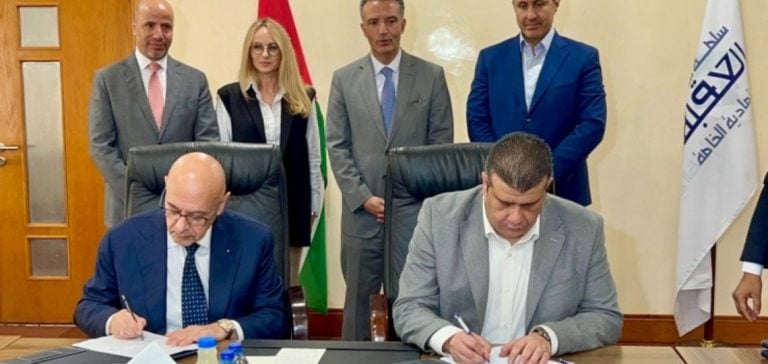Jordan Green Ammonia LLC (JGA) reached an important milestone this week by concluding land agreements with the Aqaba Special Economic Zone Authority (ASEZA) and the Aqaba Development Corporation (ADC).
These agreements mark the start of the next phase in the development of the green ammonia project in the Aqaba zone, with the aim of establishing a production facility using renewable energies.
The project involves the use of solar-powered electrolysis to produce hydrogen, which will then be converted into ammonia.
The green ammonia produced on site could reach a capacity of 300,000 tonnes per year, using modern technologies including off-grid production from solar sources abundant in the region.
Jordan thus aims to become a key player in the production of ammonia with a low carbon footprint, in line with global trends to reduce greenhouse gas emissions in industry.
A self-sufficient, sustainable energy model
JGA’s strategy is based on an energy self-sufficiency model.
By combining solar energy with advanced hydrogen storage and compression systems, the plant will operate without direct connection to the traditional electricity grid, thus limiting its environmental impact.
This project is part of a series of regional initiatives aimed at improving the energy efficiency of industrial infrastructures, while contributing to the decarbonization of the sector.
The agreement with ASEZA gives JGA access to strategic land in the Aqaba area, a region already renowned for its industrial and port facilities.
The aim is to quickly begin detailed feasibility studies and to start the first stages of construction in the coming months.
Production should start within five years, depending on the results of technical and environmental studies.
The institutional framework and the players involved
The project enjoys the support of the Jordanian authorities, notably through a Memorandum of Understanding signed in 2023 between Jordan Green Ammonia LLC and the Ministry of Energy and Mineral Resources (MEMR).
This agreement facilitates access to the local resources and infrastructure needed to accelerate project implementation.
On the stakeholder side, ASEZA and ADC play a key role in the licensing and management of Aqaba’s industrial infrastructure.
These institutions, essential to Jordan’s economic development, are working with JGA to ensure that regulatory and environmental requirements are fully met, particularly with regard to the use of water resources for the desalination process.
Production geared to international markets
The production of green ammonia in Jordan has major potential outlets on international markets, particularly in Europe and Asia, where demand for low-carbon energy solutions continues to grow.
Ammonia, used mainly in the chemical and agricultural industries, represents a storage and transport solution for hydrogen, facilitating its integration into international supply chains.
Jordan hopes to take advantage of its strategic geographical location, close to major global shipping routes, to export this green ammonia to markets sensitive to sustainability issues.
By boosting its ammonia production capacity, the country could also attract new investment in other clean energy sectors.
Project development prospects
Jordan Green Ammonia LLC has already submitted its technical report and expects to complete all feasibility studies in the coming months.
The project will be carried out in stages, with a construction schedule spread over several years.
The aim is to ensure that all technical, economic and environmental components are optimized before production starts.
Jordan, which boasts some of the highest solar potential in the world, is looking to capitalize on this resource to transform its economy and reduce its dependence on fossil fuels.
Green ammonia is part of this strategy, with the ambition of positioning the country as a regional leader in renewable energies.






















